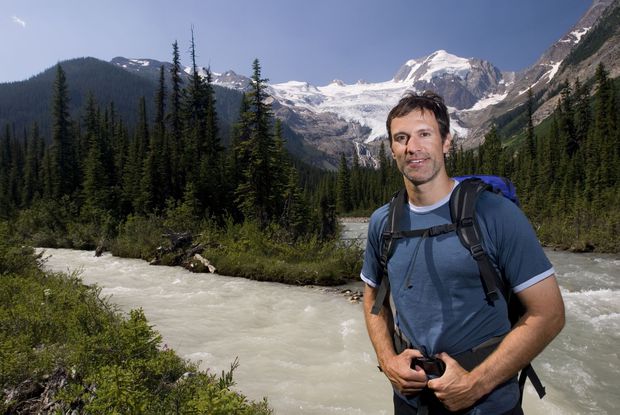Y2Y board member Scott Niedermayer is a Hockey Hall of Famer, two-time Olympian, four-time Stanley Cup champion and conservationist who lives in B.C’s Okanagan. This opinion piece was originally published in the Globe and Mail on Apr. 3, 2021.
No matter where I was playing hockey, home in British Columbia was always special. I feel fortunate to have grown up in the Kootenays, home to alpine lakes perfect for fishing and ancient forest glades filled with giant trees.
One memory I cherish happened when I was 12. My dad, brother and friends headed out for a day of hiking and fishing in the Purcell Mountains. While setting up the dinghy, we spotted a grizzly bear and her two cubs on the opposite shoreline. I still recall the energy and excitement, and the feeling when our dad sent us out into the boat to “stay safe.” The bear family passed without incident – but it was clear whose realm we were in.
It’s not just wildlife. The old-growth forests here are a majestic part of the wilderness, a place to experience thousands of years of history; with their iconic giant cedars, the forests are renowned the world over. Being around these ancient, mammoth trees puts things in perspective and instills a sense of awe in me to this day. It’s one of the reasons I have spent time learning about them and advocating for their protection.
The temperate rain forests found on B.C.’s coast, as well as the lesser-known but equally amazing inland temperate rain forests associated with the Rockies – the only ones of their kind in the world – have supported First Nations cultures for millennia. These forests are still working for us today, cleaning the air and water and storing carbon.
They are also critical caribou habitat. There aren’t many of these majestic animals left in the Kootenays. In fact, since 2006 five herds here have become extirpated, or locally extinct. Protecting and connecting their old-growth forest habitat gives these animals a chance of survival and recovery.
But recent research reveals just how much of these once-vast forests – many of which have been growing since the Middle Ages – have been lost, and how shockingly little remains.
Less than 3 per cent of the province’s forested land is actually made up of big-tree, old-growth forests, an area covering only about 400,000 hectares. That’s just slightly larger than the forests in Banff National Park.
With so little real old-growth remaining, you would think that B.C. would be protecting everything that’s left. You would be wrong.
These few remaining “last best forests are largely unprotected. Another recent analysis of the inland rain forest found that only 17 per cent of Old Growth Management Areas, meant to protect these ecological treasures, are actual old growth. More than half of the available old growth remains unprotected and available for logging.
Last September, the B.C. government released the findings from an independent two-person Old Growth Strategic Review Panel. This work was done to address the concern scientists and others had over the state of the province’s old-growth forests.
Engagement from British Columbians was substantial, showing communities care about their forests and want a real response from government on this important resource. The panel stated forestry laws and policy are outdated and inadequate, and have failed to protect our valuable biodiversity.
The take-away: There needs to be a paradigm shift on how we manage old-growth.
While we wait for that to happen – there has been no public action or update yet – we need to protect what’s left. These forests and the species within them, including the endangered caribou and the elusive wolverine, are irreplaceable. The government needs to put in the work to address this issue in a meaningful way.
And make no mistake, it will require work. These forests have taken hundreds of years to develop into the living cathedrals they are today. They play critical roles in mitigating climate change, including by storing carbon. Old-growth forests are unique – it’s hard to find that kind of peace and feeling anywhere. It’s no wonder they are havens for our iconic caribou and thousands of other species, some of which live nowhere else.
If these forests are logged, they are gone forever.
It’s time to honour them for their true value, and stop cutting them down. Since the government panel acknowledges forestry management needs to change, there is hope for the scenic, beautiful places that make B.C. as wonderful and biologically productive as it is. I’d like to keep it that way for my kids, and their kids. Maybe one day we’ll see a caribou in the wild – or together experience the thrill of seeing another grizzly bear.
We can’t skate over these problems any more. We have solutions that work. Protecting B.C.’s old-growth forests is a win for people and wildlife, today and for the future.


